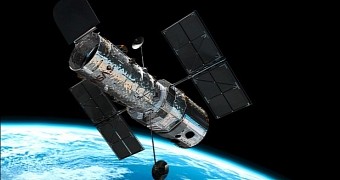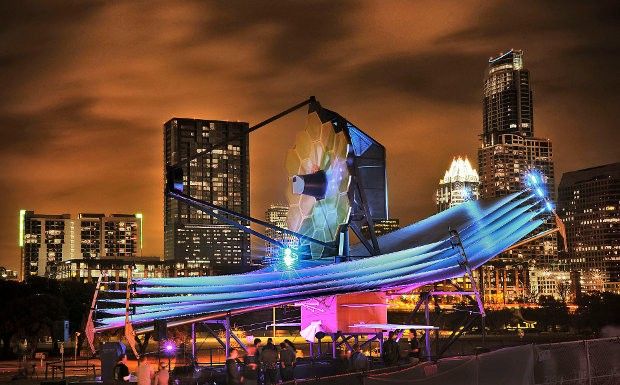This Friday, April 24, marks the anniversary of the Hubble Space Telescope's 25th year in space. That's right, this telescope has officially been orbiting our planet for a quarter of a century.
Since its launch in 1990, the Hubble Space Telescope has delivered enough data for researchers to publish close to 13,000 papers, and in doing so, it has forever transformed our view of the universe.
How the telescope got its name
The Hubble Space Telescope is named after astronomer Edwin Powell Hubble (1889 - 1953), who, back in the 1920s, identified clouds of light visible in the distant universe as galaxies.
This discovery that our home galaxy, the Milky Way, is just one of many such cosmic structures populating the universe revolutionized the field of astronomy.
In 1929, Edwin Powell Hubble showed that, the farther a galaxy is from our planet, the faster it seems to move away. This find paved the way for the idea of an expanding universe and the Big Bang theory.
One of the most iconic scientific instruments ever made
The Hubble Space Telescope was designed and built by NASA in collaboration with ESA researchers, and is now operated by the Space Telescope Science Institute.
The scientific instrument measures 43.5 feet (13.3 meters) in length and 14 feet (4.3 meters) across at its widest point. Otherwise put, it is about as big as the average bus.
It was delivered into our planet's orbit by NASA's Space Shuttle Discovery and has since been hovering over Earth at an altitude of about 350 miles (roughly 560 kilometers).
As for its speed, the Hubble Space Telescope is said to travel at about 17,000 miles per hour (over 27,000 kilometers per hour), which explains why it needs just 95 minutes to circle Earth.
The telescope transformed over the years
When launched in April 1990, the space telescope carried just five main instruments: the Wide Field and Planetary Camera, the Goddard High Resolution Spectrograph, the High Speed Photometer, the Faint Object Camera, and the Faint Object Spectrograph.
Over the years, however, the Hubble Space Telescope has several times been upgraded. Today, its anatomy is notably more complex than it was when the scientific instrument first made it into our planet's orbit.
Its current instruments are the Advanced Camera for Surveys, the Cosmic Origins Spectrograph, the Fine Guidance Sensors, the Near Infrared Camera and Multi Object Spectrometer, the Space Telescope Imaging Spectrograph and the Wide Field Camera 3.
Hubble's successor is already in the making
Hubble might have contributed more to scientific research than any other instrument, but as it turns out, it will soon be forced into retirement. In fact, word has it its successor is already in the making.
Hubble's heir, the James Webb Space Telescope, is now being built by NASA together with ESA and the Canadian Space Agency, and promises to be the most powerful space telescope the world has ever seen.
The scientists working on designing and piecing together this successor to Hubble expect that they will launch it sometime in October 2018. Check out the photo below to get an idea of what the James Webb Telescope will look like.
Also, if you have a few minutes to spare, have a look at 25 of Hubble's best space images.

 14 DAY TRIAL //
14 DAY TRIAL // 

